 My youngest daughter is a wonderfully spunky first grader whom people often call “headstrong,” using that tone that suggests they’ll make sure and say a prayer for me later.
My youngest daughter is a wonderfully spunky first grader whom people often call “headstrong,” using that tone that suggests they’ll make sure and say a prayer for me later.
People make those casual remarks and we all have a good laugh, and I quietly cross them off the family Christmas card list. Just kidding. They’re right about her and I’m glad for it. She knows what she likes and doesn’t like, and she’ll never waste a moment of her life letting someone else tell her how to live it.
All of this is to say that she gave me a heart attack a couple nights ago when she announced at bedtime, “I don’t like reading.” I challenged her immediately by pointing out that she’s constantly reading Mo Willems books and Dog Man and all sorts of graphic novels.
Which led to this exchange:
“No, daddy, I don’t like reading THESE books,” Taylor said, tossing her bag of leveled-reading books at me in disgust. These are books she brings home at least a couple times a week to help make sure she’s reading in the right difficulty range and to help her continue growing. They’re good at that job, I think, but they’re about as interesting as potato salad.
“Oh. Buddy, those are to help you get better at reading! They don’t have to be your favorites,” I said.
Her response: “I don’t like them and I’m not reading them anymore.”
We eventually talked things out. But not before the episode got me thinking about Taylor as a future student in high school, and by extension, my own current students.
Willful Reading and Forced Reading
I suddenly imagined Taylor as the sort of student I see all the time–the type who lights up conversations and writing assignments when a text catches her fancy. Passionate about their favorite readings, these kids are equally passionate about their hatred for what they consider forced labor–any assignment related to a text they aren’t into.
No sooner did this “nightmare” occur to me than I realized my hypocrisy. I LOVE these sorts of students. They’re unwilling to “play school” but are more passionate–and much more knowledgeable–than students who do the work without slowing down to consider the value of anything beyond a grade.
 There are lots of conversations to be had about this intersection of student interest and assessment. But let’s come back to my daughter for a second. Imagine her ten years from now. Or just look around your own classroom and pick the half dozen or so kids this description fits: She continues to love a good book when someone hands it to her, but she shrinks from most of what a teacher assigns, assuming wearily that it’s more literature that someone else has decided has value–or is being used to test her. If she’s learned to “do school” then she’s compliant but uninterested. If she decides that there are better things to do than complying with assessments, then maybe she’s taking a pass on most of what’s handed to her in an English class.
There are lots of conversations to be had about this intersection of student interest and assessment. But let’s come back to my daughter for a second. Imagine her ten years from now. Or just look around your own classroom and pick the half dozen or so kids this description fits: She continues to love a good book when someone hands it to her, but she shrinks from most of what a teacher assigns, assuming wearily that it’s more literature that someone else has decided has value–or is being used to test her. If she’s learned to “do school” then she’s compliant but uninterested. If she decides that there are better things to do than complying with assessments, then maybe she’s taking a pass on most of what’s handed to her in an English class.
Taylor will be fine–she has two teachers for parents and a reading-centered household. I worry more about the students I have in class now. How often do we give them opportunities to demonstrate their skills as readers and writers, unshackled from the separate (much less useful) skill of compliance?
Our curriculum’s standards help expose students to seminal works of literature, but we are often slow to recognize that analytical reading and genre exploration are absolutely NOT tied to those same texts. If a student is reluctant to engage with Shakespeare or Krakauer, have we accurately assessed their reading abilities when we write them off, based on an effort we know wasn’t indicative of them as readers?
Balance for the Forced
It would be enormously insulting of me to suggest that you should build alternative assessments for your entire gradebook to accommodate students who haven’t learned to tow the line sometimes. But I think sometimes there’s also room for balance: If one opportunity to demonstrate annotation skills presents itself during The Great Gatsby, a standards-based alternative might be fairly easy to build with Flipgrid or a quick conference about a scene from a student’s independent reading. If they’re reading books that are Lexile-appropriate (or complexity appropriate, if you’re measuring implicit meaning), then their ability to perform on the text they’re attached to should overshadow however they perform on the task related to a class reading.
This idea can be a tough pill to swallow. Many of us got into this profession due to a love for the classics and the notion that we are laying the foundations of culture in our English classrooms. Yet for every one of us who fawns over Faulkner, there’s another of us who never quite figured out why Salinger was such a big deal.
If a student in high school has the fundamentals down–if she can read a grade-appropriate text and tell you the tone and the mood and tie it to current events and posit motives for the main characters’ decisions–then we should be much more worried about how to get all of those A-plus students who never pick up a pleasure book to follow her lead and learn the value of reading itself.

Michael Ziegler (@ZigThinks) is a Content Area Leader and teacher at Novi High School. This is his 15th year in the classroom. He teaches 11th Grade English and IB Theory of Knowledge. He also coaches JV Girls Soccer and has spent time as a Creative Writing Club sponsor, Poetry Slam team coach, AdvancEd Chair, and Boys JV Soccer Coach. He did his undergraduate work at the University of Michigan, majoring in English, and earned his Masters in Administration from Michigan State University.

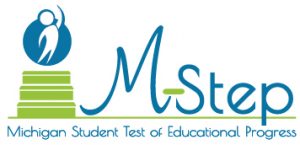 With test prep season beginning and the M-STEP looming, teachers can become frustrated because there are not many
With test prep season beginning and the M-STEP looming, teachers can become frustrated because there are not many 
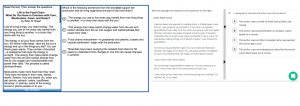

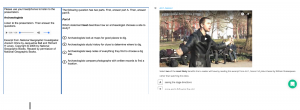
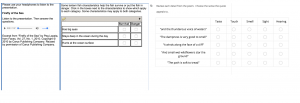
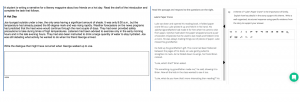
 Jianna Taylor (
Jianna Taylor ( Sixteen years ago I wrote a book.
Sixteen years ago I wrote a book. Beth Rogers is a fifth grade teacher for
Beth Rogers is a fifth grade teacher for  This post’s title is better if you sing it to the tune of “Video Killed the Radio Star,” but I suppose that’s true of almost anything ever typed. Anyway, if you’ve followed my rantings for any period of time, you’re probably familiar with my efforts last year to
This post’s title is better if you sing it to the tune of “Video Killed the Radio Star,” but I suppose that’s true of almost anything ever typed. Anyway, if you’ve followed my rantings for any period of time, you’re probably familiar with my efforts last year to 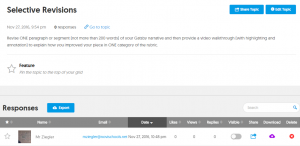
 Our department read the wonderful
Our department read the wonderful  It’s been a couple of weeks since school let out for the summer. I’ve tackled a few projects, read a book or two. And so, of course, I’ve started to think about next year.
It’s been a couple of weeks since school let out for the summer. I’ve tackled a few projects, read a book or two. And so, of course, I’ve started to think about next year.  Two years ago my students really dug into Ceremony, by Leslie Marmon Silko. It was the most discussed novel, followed by Atwood’s The Handmaid’s Tale. Not so this year. Ceremony was roundly criticized by almost all of my students, while Handmaid’s was lauded.
Two years ago my students really dug into Ceremony, by Leslie Marmon Silko. It was the most discussed novel, followed by Atwood’s The Handmaid’s Tale. Not so this year. Ceremony was roundly criticized by almost all of my students, while Handmaid’s was lauded. Rick Kreinbring teaches English at Avondale High School in Auburn Hills, Michigan. His current assignments include teaching AP Language and Composition and AP Literature and Composition. He is a member of a
Rick Kreinbring teaches English at Avondale High School in Auburn Hills, Michigan. His current assignments include teaching AP Language and Composition and AP Literature and Composition. He is a member of a 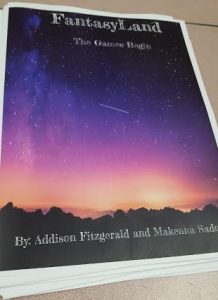 A few weeks ago I wrote about giving students choice in end-of-year reading and writing projects, in an attempt to maintain enthusiasm for learning into mid-June, which is a challenge no matter how motivated your learners are. I’d never done this before, but I decided to jump and
A few weeks ago I wrote about giving students choice in end-of-year reading and writing projects, in an attempt to maintain enthusiasm for learning into mid-June, which is a challenge no matter how motivated your learners are. I’d never done this before, but I decided to jump and 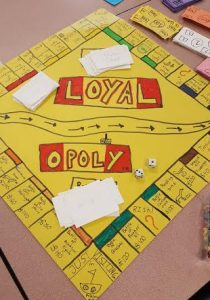 Projects ranged from Google Presentations on the Holocaust to a 175-page book, complete with a companion text of biographies of the characters. There were board games about topics of interest, and there were poetry anthologies. The students were proud and so was I.
Projects ranged from Google Presentations on the Holocaust to a 175-page book, complete with a companion text of biographies of the characters. There were board games about topics of interest, and there were poetry anthologies. The students were proud and so was I. My mom always used to say, “There’s more than one way to skin a cat.”
My mom always used to say, “There’s more than one way to skin a cat.”  This was the most important part, I think. After the unit, we shared our different approaches and what had gone well.
This was the most important part, I think. After the unit, we shared our different approaches and what had gone well. 
 After writing last month about
After writing last month about  Two other students are working on a poetry anthology, analyzing mentor texts and trying
Two other students are working on a poetry anthology, analyzing mentor texts and trying  Back in
Back in 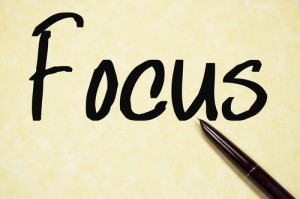 When we conflate the two and give them a ½ on the question, we have provided ourselves a sloppy data point. And by the time we’ve graded a set of 120 of that assessment, we might come to a wrong-minded, broad conclusion that sets the class back needlessly. Do they
When we conflate the two and give them a ½ on the question, we have provided ourselves a sloppy data point. And by the time we’ve graded a set of 120 of that assessment, we might come to a wrong-minded, broad conclusion that sets the class back needlessly. Do they